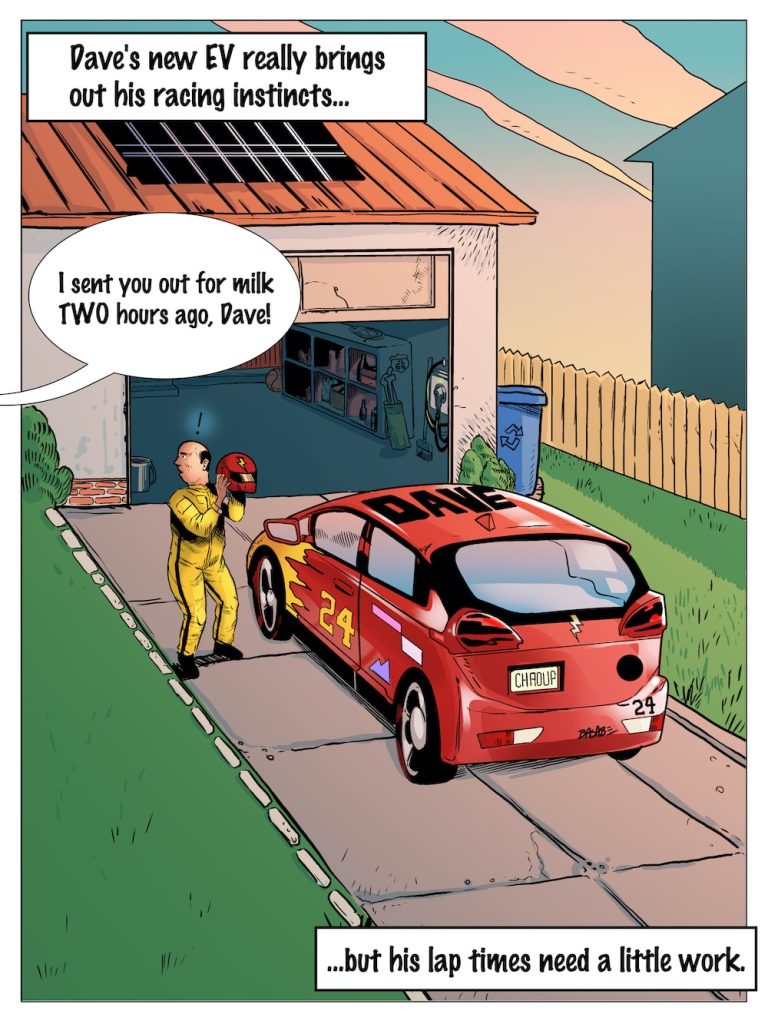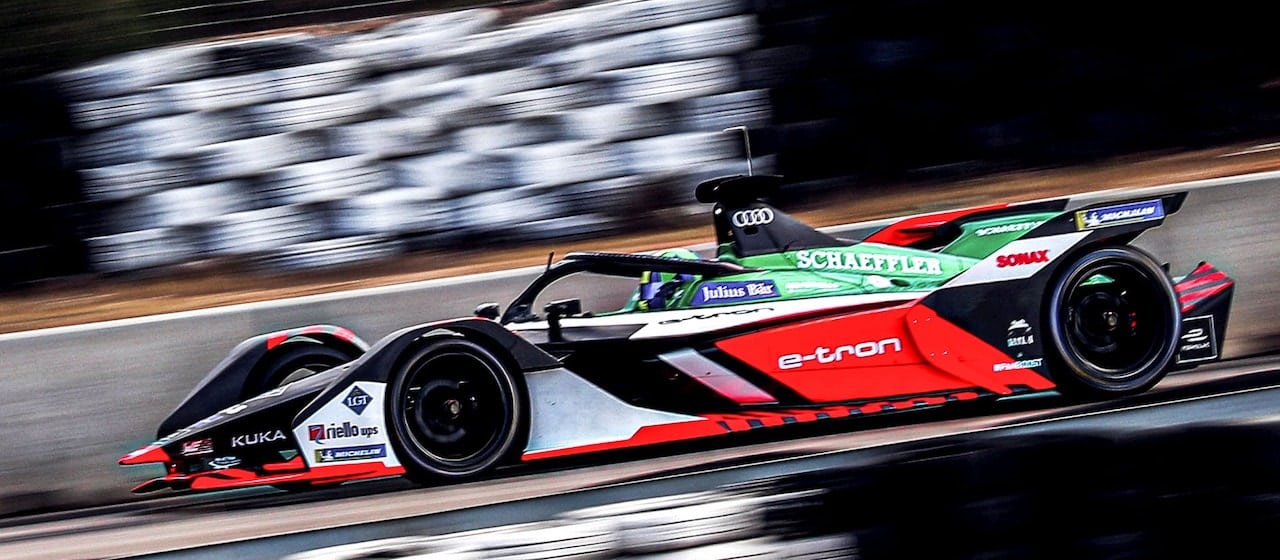If you’re a sports fan, there’s a new(ish) event you can feel great about watching: Formula E auto racing. As Formula One’s electric little brother, Formula E is fast, furious, and it’s (literally) changing the world. In the same way Formula One influenced the design and technology of many of today’s gas-guzzling speedsters, Formula E is at the forefront of developing more efficient electric vehicles (EVs). It’s shaping the very cars we’ll be driving in the future—and it’s not easing off the accelerator anytime soon.
When Formula E launched in 2014, hard-core motorsports fans were skeptical. Fast forward a few years, and it’s now the biggest mainstream electric car competition in the world, holding its own among other top events. Last season alone, more than 400,000 spectators came through the turnstiles, and viewership exceeded 400 million. With Formula E’s fanbase revving up, the event has been upgraded to world championship status, the first single-seater racing series outside of Formula One to achieve this honor.
What’s the allure? Sure, “ePrix” racing involves seat-gripping action and some of the biggest names in the automotive world. But Formula E is also one of the few sports that actually jives with the clean energy future we all need to move to (and fast). They’re getting millions of people—especially young people—excited about the potential for EVs to help stabilize our climate and clean up our air. Put simply, in today’s climate-challenged world, Formula E is relevant in a way that smoke-belching stock cars are not.
On June 26 we joined Audi’s Formula E racing team for an online conversation around how the sport is shaking up the racing world and what it means for our mobility future. Watch the recording here.
According to Alberto Longo, chief operating officer of Formula E, the core purpose of the race series is “to accelerate the adoption of electric vehicles on a global scale. Formula E is about racing for a cleaner future, faster.” The cutting-edge technologies being tested on the ePrix circuit have practical, real-world applications in today’s commercial EV fleets and beyond. That’s a key reason many of the world’s top auto manufacturers—from Audi and BMW to Mercedes and Nissan—have signed up to participate in the series.
Formula E has helped advance traditionally posed a barrier to mainstreaming electric transport. Just a few years ago, ePrix drivers couldn’t make it through a 45-minute race without swapping out their vehicles, because the batteries weren’t powerful enough. Today, the cars can last through an entire race while maintaining speeds of around 175 miles an hour. The sport has revolutionized EV battery and software development in a very short period. “That’s an incredible time-frame and makes you wonder what the next five years will bring,” said Sylvain Filippi, managing director of Envision Virgin Racing, one of the greenest teams in Formula E.
Technology trialed on the racing circuit is now being used in Jaguar’s first electric SUV, the I-PACE, which recently entered the commercial market and can travel more than 250 miles on a single charge. Beyond the luxury market, more affordable EVs with greatly improved driving range are available from automakers like Kia, Nissan and Tesla, whose Model 3 was the ninth best-selling car (of all types) in the U.S. last year, with a range exceeding 300 miles. The second-hand EV market is also growing.

EVs are only as “green” as the energy used to charge them. That’s why Formula E recharges the car batteries used in races using generators that run on zero-emissions glycerin, a by-product of producing biodiesel. Back in the real world, we’ll be charging the EVs parked in our driveways with the electricity from our homes—so the greener we can make that (by installing rooftop solar panels and using other renewable power sources), the fewer emissions we’ll generate overall.
Sometimes, it can be hard to fathom the passion that hard-core fanatics have for car racing (or any sport, really). But if we can translate that same level of enthusiasm and commitment into demand for electrifying our transportation systems, that’s something we can all get behind. Given the rapid acceleration on the Formula E front, we should soon see EVs taking their victory lap around the world.















